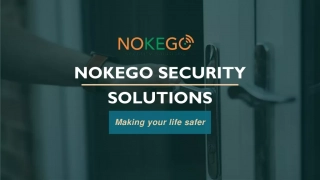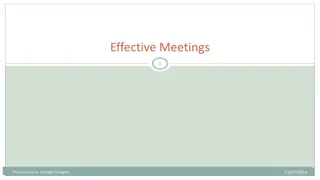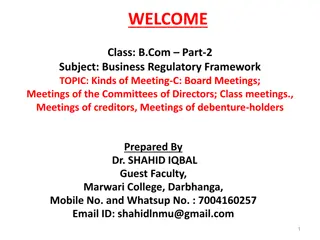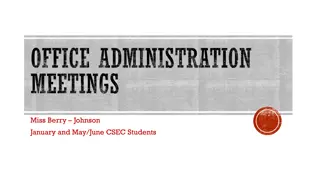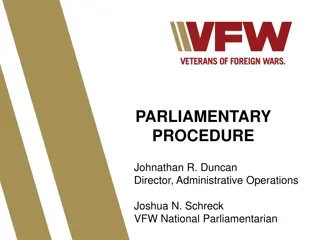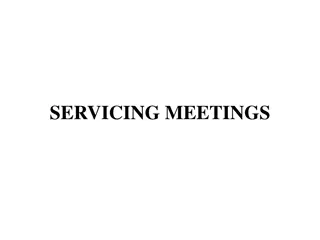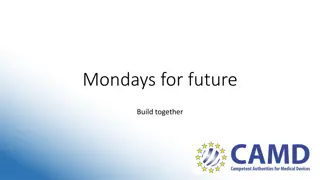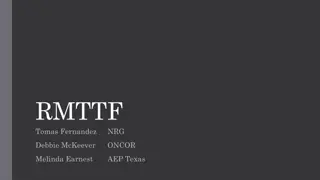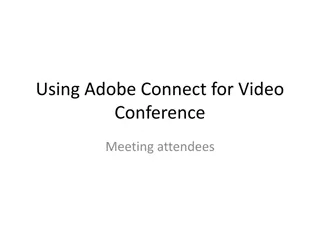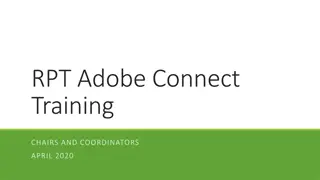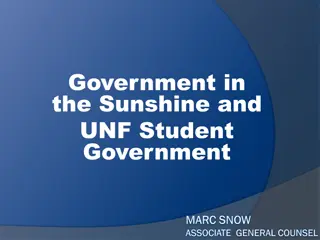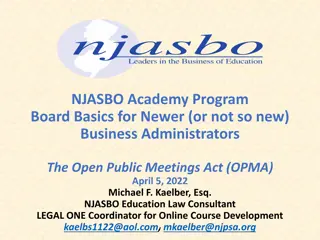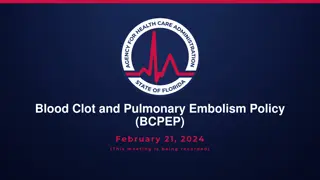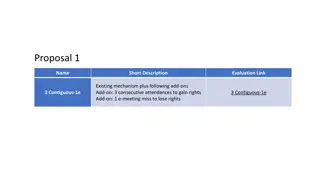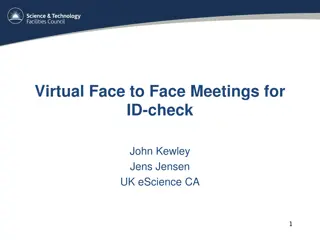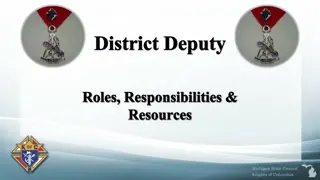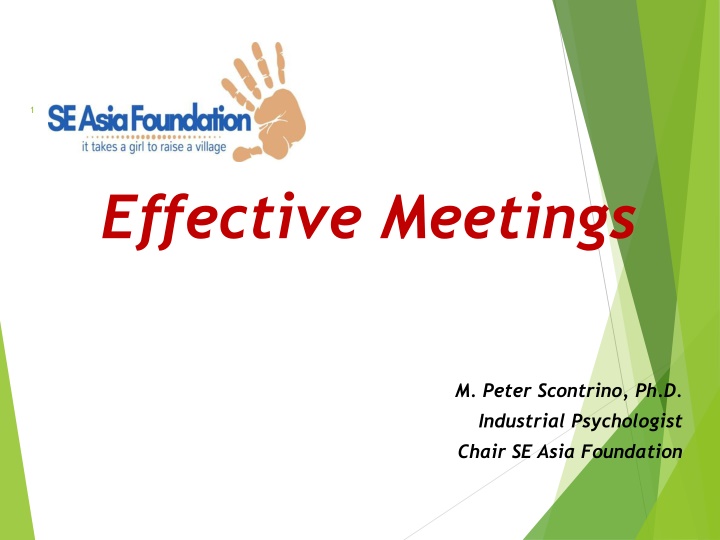
Effective Meeting Essentials & Formulas for Productivity
Learn the essential elements for successful meetings, including clear objectives, proper agendas, and the right participants. Discover the formula for an effective meeting where participants actively engage, pay attention, and follow up on actions for optimal productivity.
Download Presentation

Please find below an Image/Link to download the presentation.
The content on the website is provided AS IS for your information and personal use only. It may not be sold, licensed, or shared on other websites without obtaining consent from the author. If you encounter any issues during the download, it is possible that the publisher has removed the file from their server.
You are allowed to download the files provided on this website for personal or commercial use, subject to the condition that they are used lawfully. All files are the property of their respective owners.
The content on the website is provided AS IS for your information and personal use only. It may not be sold, licensed, or shared on other websites without obtaining consent from the author.
E N D
Presentation Transcript
1 Effective Meetings M. Peter Scontrino, Ph.D. Industrial Psychologist Chair SE Asia Foundation
AGENDA Meeting Essentials 1. Meeting Format/Agenda 2. Opening, Leading, and Concluding Meetings 3. Task, Process, Maintenance, and Team Building 4. Meeting Tips 5. Meeting Evaluation 6. Follow-up 7. 2
Meeting Essentials A clear objective An agenda The right people in attendance The right size of group Leader, facilitator, and record keeper 3
What All Meetings Have in Common 1/2 1. People 2. A purpose 3. An atmosphere 4. A physical place 5. Costs 6. Time dimensions 4
What All Meetings Have in Common 2/2 7. Pre-meeting work 8. An agenda 9. A meeting process 10. Meeting follow-up Question: How do you plan to manage each of the above? 5
Formula for an effective meeting An effective meeting occurs when participants: Know why they are there Actively participate toward accomplishing the meeting objective(s) Pay attention to what they are doing and how they are doing it Follow up on agreed upon actions 6
Exercise One What was the written objective of the last meeting you attended? Write an objective for that meeting. 7
Prior to the Meeting Plan Carefully Who, what, when, where why (Invite all those and only those who have a stake in the outcome of the meeting and/or its action items and those who will take an active role in the meeting.) Prepare Agenda Prepare Room Assemble supplies (flip chart, ppt projector, tape, markers) Set up Room (Comfortable & Conductive to discussion and open sharing of ideas) Provide refreshments or lunch 8
MEETING FORMAT/AGENDA Place: ___________________ Who: ___________________ Date: ____________________________ Time: ____________________________ ______________________________________________________________ Supplies / Materials: _____________________________________________ ______________________________________________________________ ______________________________________________________________ Objective(s) for this meeting: ______________________________________________________________ _____________________________________________________________________________________ Agenda Items: Purpose: Information, Discussion, Decision Time Allotment: ______________________________________________________________________________________________ ______________________________________________________________________________________________ ______________________________________________________________________________________________ ______________________________________________________________________________________________ ______________________________________________________________________________________________ __________________________________________________________________________________ Action Items: Who does What by When ______________________________________________________________________________________________ ______________________________________________________________________________________________ ______________________________________________________________________________________________ _____________________________________________________________________________________ Process Recap for Today s Meeting: (Each person has 30 seconds to comment on today s meeting. What worked, what didn t work, overall reactions, suggestions for improvement, etc.) 9
Open Meeting Start on Time Introduce Participants (if needed) Verify Ground Rules (set or review/add to previous) Define Roles (Facilitator/Timekeeper/Recorder/Participants) Review Agenda Establish Time Limits State Desired Outcomes Describe Decision Making Method Review Action Items from Previous Meeting (if needed) 10
During The Meeting Leading the meeting Create A Positive Atmosphere How Can Participation Be Maximized Use An Action Item/To-do List Use A Parking Lot List To Record Issues For Later Discussion Use problem solving tools as needed 11
Parking Lot Hang a piece of flip chart paper on the wall and label it Parking Lot. Use the parking lot to record things that can not be addressed during the present meeting Use parking lot items to help plan future meetings 12
Pay Attention To: The Task Working on agenda items The Process how are we doing Maintenance paying attention to the needs of individuals anticipating things that will work anticipating things that will go wrong Team Building activities that strengthen the group 13
Some Meeting Tips Work the agenda Use the "parking lot" concept Put a time limit on agenda topics Put silent members to work Manage talkative members by: Using the agenda Acknowledging comments on flip-chart Putting them to work Rotate all roles 14 Use meeting effectiveness questionnaire
Taking a Survey to Focus on a Specific Question Sometimes groups get bogged down when they are discussing an issue. You can use a survey to help the group members see what others are thinking. Process: 1. Any group member can state, I want to take a survey. 2. All discussion stops. 3. The person phrases their question so that it can be answered yes or no. 4. Go around the table in round robin fashion and have each person say yes or no. 5. No discussion is allowed. 6. The person requesting the survey keeps track of the votes and then summarizes the vote for the group. 15
Weekly Meeting Effectiveness Questionnaire Yes No ____ ____ 1. Was the reason for this meeting clear to me? ____ ____ 2. Did I have information that was important to accomplishing the goals of this meeting? ____ ____ 3. Were the people necessary for making the necessary decisions in attendance? ____ ____ 4. Did everyone in the group contribute to the process? ____ ____ 5. Did we reach decisions using consensus? ____ ____ 6. Was the atmosphere supportive of new ideas and creative solutions? ____ ____ 7. Did the meeting start and end on time? ____ ____ 8. Was there an agenda? ____ ____ 9. Did the agenda match our meeting objective? ____ ____ 10. Did the meeting leader follow the agenda? ____ ____ 11. Did the facilitator provide appropriate support for the process? ____ ____ 12. Did I feel my time was used well by attending this meeting? 16
Exercise Two Complete the weekly meeting effectiveness questionnaire for a meeting that you recently attended. 17
Concluding the Meeting Close/Build Consensus Review action items and assignments Solicit agenda items for next meeting Review the Parking Lot List Follow Through Review What Happened Establish Action Items: Who, what, when Summarize What was Recorded Use the meeting effectiveness questionnaire Review - What worked/what to change for next time - Close on a positive note 18
After The Meeting Document Meeting Results & Distribute to Participants Follow-up on action items Plan the next meeting 19
Tips on Using Flip Charts Use lined paper Use water soluble markers like Mr. Sketch Print with large letters Use Post-It flip charts or prepare pieces of masking tape before tearing off paper Don t worry about spelling Ask others to record for you 20
ACTION ITEM LIST: Who does What by When ITEM ASSIGNED TO DUE DATE 1. _____________________________________________________________________________________________________________ 2. _____________________________________________________________________________________________________________ 3. _____________________________________________________________________________________________________________ 4. _____________________________________________________________________________________________________________ 5. _____________________________________________________________________________________________________________ 6. _____________________________________________________________________________________________________________ 7. _____________________________________________________________________________________________________________ 8. _____________________________________________________________________________________________________________ 9. _____________________________________________________________________________________________________________ 10. ____________________________________________________________________________________________________________ 21

